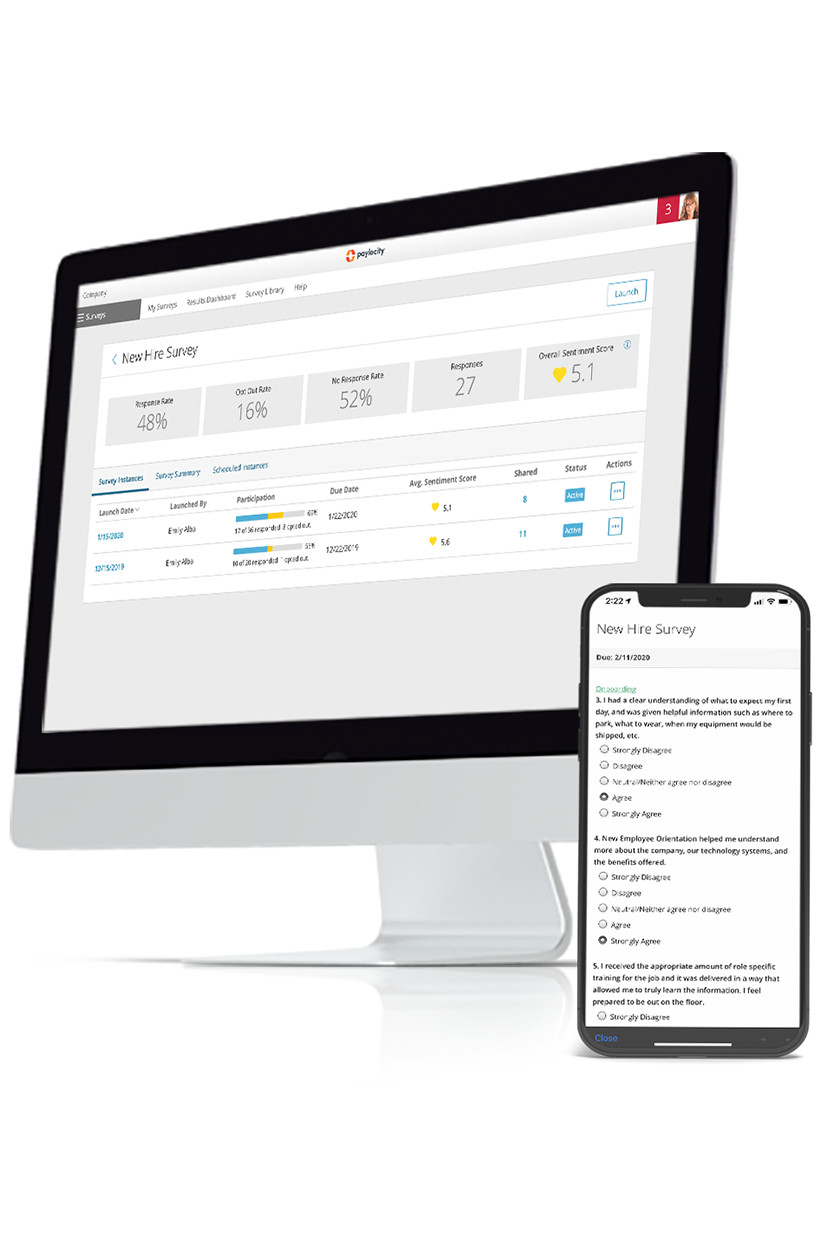Employee Net Promoter Score (eNPS)
Summary Definition: A measurement of how engaged and satisfied employees are with their employer based on their likelihood to recommend it to others.
What is an Employee Net Promoter Score (eNPS)?
An Employee Net Promoter Score (eNPS) is a survey-based data point used to see how likely an organization’s employees are to recommend it to others. Employee responses and the organization’s total score are used to understand the workforce’s satisfaction and engagement with that organization.
Employers simply distribute a survey that asks employees how likely they are to recommend the organization to others on a scale of 0 – 10. Employees who reply with a nine or 10 are called Promoters, while those who reply with a seven or eight are called Passives. Those who respond with a 0 – 6 are called Detractors.
Key Takeaways
- eNPS measures how likely employees are to recommend their employer to others based on their engagement and satisfaction with the organization.
- Employees rank their likelihood of recommending their employer on a scale of 0 – 10.
- Responses are sorted into three bands: Promoters, Passives, and Detractors. The organization's total score is the percentage of promoters minus the percentage of detractors.
How to Use eNPS
An eNPS allows an employer to draw inferences about employee sentiment and engagement. With that in hand, employers can then follow up with employees to explore their responses in more detail, and make changes to the company’s culture, atmosphere, policies, etc.
Another possible use is to conduct a customer Net Promoter Score survey alongside an eNPS and compare the results to see if there are any correlations. This can help illustrate an organization’s growth over time and show any effects employee sentiment has on performance and customer satisfaction.
Regularly conducting eNPS surveys can also help maintain or improve an organization’s score by providing a consistent source of updated data. Changes or updates to a company’s work environment, culture, goals, etc., can impact an eNPS even if those changes weren’t in response to a prior eNPS survey. Therefore, it’s helpful to always have recent data that accurately reflects a workforce’s current sentiment.
How to Calculate eNPS
After collecting and sorting employee responses, employers should subtract the percentage of Detractors from the percentage of Promoters to find the organization’s eNPS.
For example, if Company A has 300 employees and receives the set of responses below to its eNPS survey, the company itself has an eNPS of 33 (50 – 17 = 33).
- 150 Promoters (50%)
- 100 Passives (33%)
- 50 Detractors (17%)
eNPS Calculation
[% of Promoters] – [% of Detractors] = eNPS
Example: 50% Promoters – 17% Detractors = 33 eNPS
What is a Good eNPS?
An eNPS greater than 30 indicates a workforce is engaged with and loyal to its employer, while scores of 30 or lower mean the opposite.
Pros and Cons of eNPS
The biggest advantage of an eNPS is its simplicity. Both the survey format and the calculations made based on it are easy to understand and quick. This makes eNPS ideal for signaling if further investigation is necessary. That simplicity also makes the score more reliable over time, as there is little chance for employees to be confused about how to respond.
However, there are some drawbacks to using eNPS. While the total score can be a good indicator, it doesn’t allow for deeper, qualitative analysis. Moreover, a smaller organization with few employees may see dramatically varied scores across each round of surveys due to the smaller amount of responses.
For example, a company with only 30 employees may have 12 Promoters and 12 Passives, but that’d still result in an eNPS of only 20. Despite only having six Detractors out of 30 employees, that score makes it seem like the company’s staff is unhappy and disengaged. Moreover, if only three people gave a higher rating and became Promoters, the eNPS would jump to 30.

Capture Your Employees' Voices
Your employees want to be a part of creating your company's culture. Make sure they're heard through engaging surveys. Using our questionnaire tool, you can gather invaluable feedback from your entire workforce — remote, hybrid, in-office, contractors, and more. Get the insights you need to make improvements, anticipate any problems, drive strategic decisions, and keep your employees engaged.